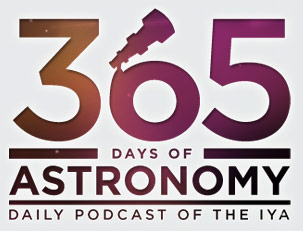Observatory Open House Tonight February 26, 2010
Posted by jcconwell in Astronomy, Observatory.Tags: EIU, Observatory
add a comment
Come see the wonders of the Night sky beginning at 8:00PM.
Astronomy Colloquium: COSMIC COLLISIONS February 22, 2010
Posted by jcconwell in Astronomy, meteor, planets.Tags: Asteroid, Dr Heidi Hammel, planets, Solar System
add a comment
COSMIC COLLISIONS
Dr. Heidi Hammel
Professor of Physics and Astronomy , Space Science Institute
Thursday, February 25, 4:00PM
Physical Science Building , Room 2120
Sponsored by the College of Sciences in coordination with WISM (Women in Science + Mathematics at EIU)
Dr. Hammel received her undergraduate degree from the Massachusetts Institute of Technology (MIT) in 1982 and her Ph.D. in physics and astronomy from the University of Hawaii in 1988. After a post-doctoral position at NASA’s Jet Propulsion Laboratory, Pasadena, Calif., Hammel returned to MIT, where she spent nearly nine years as a Principal Research Scientist in the Department of Earth, Atmospheric, and Planetary Sciences.
Dr. Hammel primarily studies the outer planets and their satellites, focusing on observational techniques. She was a member of the Imaging Science Team for the Voyager 2 encounter with the planet Neptune in 1989. In 1994, she led the team that investigated Jupiter’s visible wavelength response to the impact of comet Shoemaker-Levy 9 using the Hubble Space Telescope. Her latest research involves the imaging of Neptune and Uranus with the Hubble Space Telescope, W. M. Keck Observatory,(which houses a pair of much larger (ten-meter) telescopes with an “adaptive optics capability” that eliminates the smearing effect of the Earth’s atmosphere), Mauna Kea Observatory, the NASA Infrared Telescope Facility (IRTF) at the peak of Hawaii’s highest mountain, Mauna Kea and other Earth based observatories.
New Podcast: An Introduction to Active Galactic Nuclei February 21, 2010
Posted by jcconwell in Black Holes, Galaxy, Podcast.Tags: blackholes, Galaxy, International Year of Astronomy, Podcast
add a comment
Active Galactic Nuclei (AGNs) are formed when enormous black holes consume material and spew out energy in jets many thousands of light-years long. This energy output, which can be up to a thousand times brighter than the galaxy itself, has a profound impact on the development of the host galaxy and its formation of new stars.
Podcaster: Olaf Davis & Renee Hlozek of the Oxford University Astrophysics Group
Bio: Olaf is a second-year PhD student in Oxford Astrophysics. His research involves computer simulations of astronomical phenomena – these include the behaviour of energetic particles around the jets of AGNs, and also the large-scale distribution of galaxies across the Universe. His blog, the Cosmic Web, is about astronomy and aimed at the layman.
Renee is in her second year, at Christ Church college Oxford, reading for a degree in Astrophysics. Her research interests include Dark Energy and decoding information contained in the Cosmic Microwave Background radiation, Baryon Acoustic Oscillations and Type-Ia Supernovae. She’s also interested in new methods of parameter estimation and forecasting. She’s passionate about outreach and public understanding of science.
http://365daysofastronomy.org/2010/02/21/february-21st-an-introduction-to-active-galactic-nuclei/
NASA Launches Solar Dynamics Observatory February 11, 2010
Posted by jcconwell in satellites, Solar and Space weather.Tags: SDO, Solar, Solar Dynamics Observatory
add a comment
NASA has launched the most advanced solar observatory ever built.
An unmanned rocket lifted off Thursday with the Solar Dynamics Observatory. The mission goal is to shed light on Earth’s star. Scientists want to better understand the violent solar activity that influences life on Earth. This space weather can disrupt communications, knock out power and disable satellites.
The Atlas V rocket carrying the Solar Dynamics Observatory lifted off from Cape Canaveral, Florida, at 10:23 a.m. ET Thursday. NASA had delayed the launch three times Wednesday because of windy conditions.
SDO: The Solar Dynamics Observatory is the first mission to be launched for NASA’s Living With a Star (LWS) Program, a program designed to understand the causes of solar variability and its impacts on Earth. SDO is designed to help us understand the Sun’s influence on Earth and Near-Earth space by studying the solar atmosphere on small scales of space and time and in many wavelengths simultaneously.
SDO’s goal is to understand, in order to predict, the solar variations that influence life and technological systems (like satellites and power grids)on Earth. Measurements hope to determine:
- how the Sun’s magnetic field is generated and structured
- how this stored magnetic energy is converted and released into the heliosphere and geospace in the form of solar wind, energetic particles, and variations in the solar irradiance.
ASTRONOMY CLUB TONIGHT! February 10, 2010
Posted by jcconwell in Astronomy.Tags: EIU, physics
add a comment
Astronomy meeting tonight at 8:00 in room 2153, physical science building. What’s the agenda tonight? Aside from the business end of things, Our president Robert Gacki will be giving a 10-15 minute presentation on teleportation.
Robert Holmes Confirms the first WISE Space Telescope Comet Discovery February 9, 2010
Posted by jcconwell in Astronomy, Comets, Observatory.Tags: ARI, comet, EIU, WISE
add a comment
Robert Holmes used the first ground based telescope, the ARO 0.81-m to confirm the first WISE space telescope comet discovery now known as COMET P/2010 B2 (WISE). Many large observatories attempted to confirm this discovery more than 7 days earlier including the Faulkes 2.0m telescope in Hawaii as well as the 0.81m telescope at ARO without success. However due to poor weather, ARO had to wait 7 more days to make their second attempt at the WISE discovery on 2010 02 07. Holmes and Harlan Devore located the target in ARO images at nearly the same time separated by about 800 miles. Two other telescopes also confirmed the WISE comet discovery including the 3.6-m telescope at Mauna Kea operated by A. Draginda and D.J. Tholen and the Spacewatch 1.8-m telescope at Kitt Peak operated by J.V. Scotti.
For an animation of this discovery confirmation and the MPEC, see
http://killerasteroidproject.org/wise_obs_page.htm






